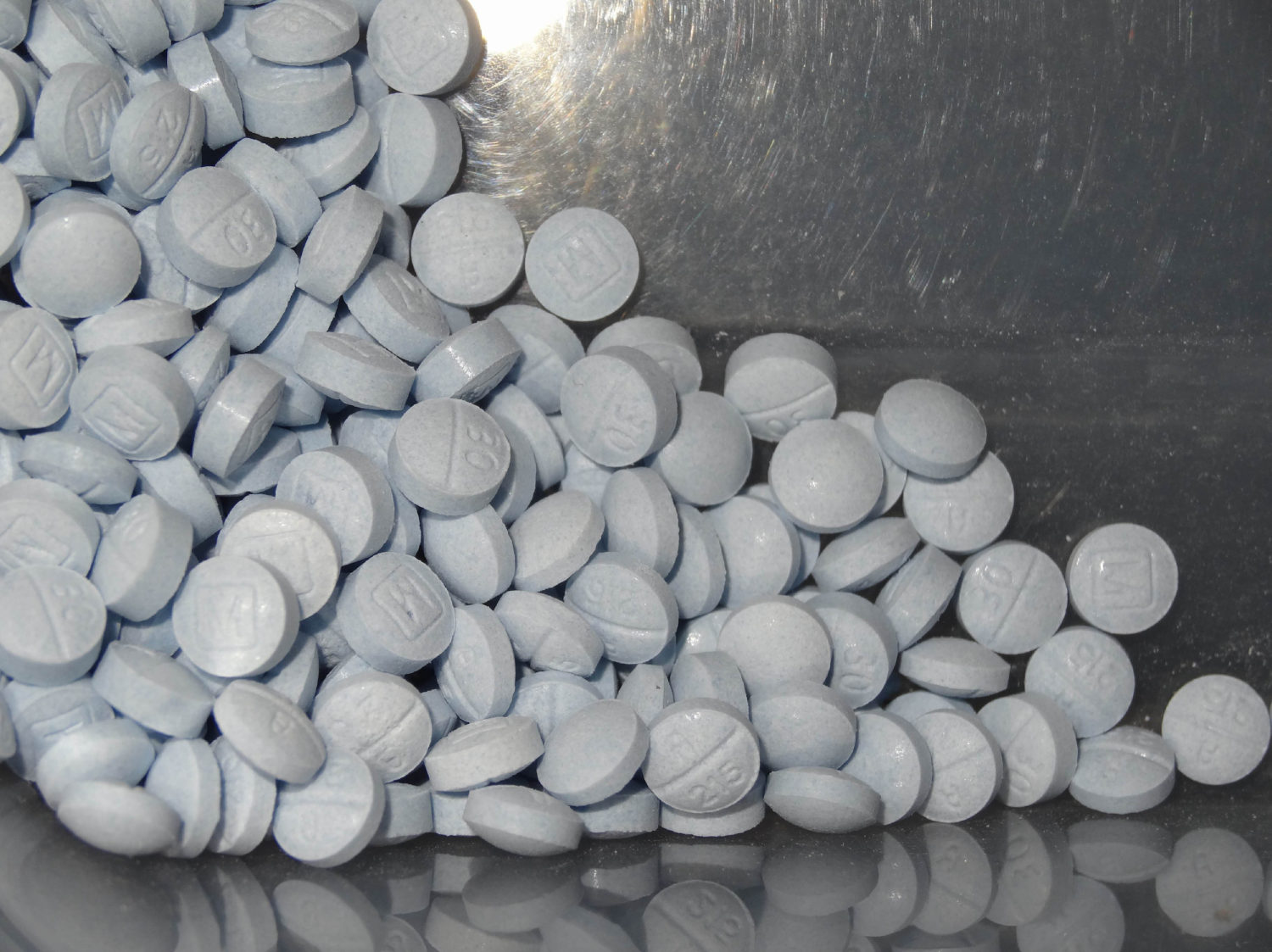Republicans and Democrats seem to agree on this key fact about fentanyl: lots of it is being interdicted at the southern U.S. border.
Beyond that, there’s disagreement on how exactly the drug is getting into the United States and what this says about President Joe Biden’s policies.
“Joe Biden’s open border policies have allowed criminal drug networks to flood the United States more easily with fentanyl, and now enough of this lethal drug has flowed across our southern border to kill every American seven times over,” Rep. Elise Stefanik, R-N.Y., said in a February 2022 statement supporting a letter signed by 116 House Republicans to Biden, demanding that his administration permanently classify fentanyl as a Schedule I substance.
The Drug Enforcement Administration defines Schedule 1 substances as drugs with no currently accepted medical use and a high potential for abuse.
At a March 7 press briefing, White House Press Secretary, Karine Jean-Pierre said the Biden administration is “seizing fentanyl at record historic levels” and attributed that to “what the president has done to secure our border.”
The amount of fentanyl seized at the southern U.S. border — at official ports of entry and in between — has been rising since fiscal year 2015. About 14,100 pounds were seized in fiscal year 2022, up from about 10,600 pounds in fiscal year 2021, U.S. Customs and Border Protection data shows. In the first five months of fiscal year 2023, officials have already seized 11,000 pounds of fentanyl.
So, what do these numbers represent?: Are they evidence that more fentanyl is coming into the country, or a sign that interdiction efforts are working and law enforcement is stopping fentanyl from entering the country?
Experts say there’s no clear, definitive answer.
David Luckey, a senior international and defense researcher at Rand Corp., a global policy think tank, said we can know with certainty only how much fentanyl is being interdicted. Any other interpretations of the data is speculative.
“Does seizing more at the border mean more is coming in? Perhaps. Likely. Does it mean we’re stopping more that’s coming in? Perhaps. Likely,” Luckey said.
Here’s a look at the accessible data and what it shows us.
Immigration and drug policy experts have told us that although a historically high number of people have been arriving at the U.S. southern border — U.S. Border Patrol encountered immigrants about 2.2 million times in fiscal year 2022 — it does not mean it is “open.” Funding and staffing levels for border protection have remained consistent between the Trump and Biden administrations, for example, and border laws and policies continue to be enforced.
What is fentanyl and how does it get into the U.S.?
Fentanyl is a synthetic opioid that is 50 to 100 times more potent than morphine and can be prescribed to treat severe pain, especially after surgery, according to the National Institute on Drug Abuse, a federal government research agency. Fentanyl can also be made and used illegally.
Illegal fentanyl can be deadly because drug users often don’t know exactly what they’re taking, Adam Isacson, defense oversight director at the Washington Office on Latin America, a research and human rights advocacy group, previously told PolitiFact. “It’s not like there’s a label” showing the contents, he said.
Most illegally sourced fentanyl in the U.S. comes from Mexico. The vast majority of fentanyl seizures happen at official ports of entry at the southern border and it’s mostly U.S. citizens who try to smuggle the drugs, according to data from the U.S. Sentencing Commission and experts.
Impossible to reach conclusions about flow of drugs from seizure data, experts say
There isn’t enough reliable data on the consumption and trafficking of illegal drugs to make the sweeping conclusions that elected officials often make, experts say.
To know for sure whether an increase in seizures means more drugs are flowing into the country, experts said we would need to know:
- How much fentanyl is being produced;
- How much of that fentanyl is intended to reach the U.S.;
- How much of that fentanyl reaches the U.S.; and
- How much fentanyl is seized.
Federal data tells us only how much is seized. Vanda Felbab-Brown, an expert on Mexican cartels at the Brookings Institution, a Washington, D.C. think tank, said that because fentanyl is made in a lab and is not a crop, estimating its production is even more difficult. (Heroin, for example, is an opioid drug stemming from opium poppy plants that gives researchers a measure to try gauging heroin production based on the rate of cultivation.)
“The data is very problematic,” Felbab-Brown said. And without the necessary information “we really cannot say anything about what seizures mean, in terms of effectiveness.”
Varying theories based on drug seizure data
Most experts that PolitiFact interviewed said that the rise in fentanyl seizures can suggest that more drugs are flowing into the country.
Cartels send more drugs to the United States when they know “a fair amount will be seized,” said Jonathan Caulkins, a drug policy researcher at Carnegie Mellon University.
David Bier, the associate director for immigration studies at the Cato Institute, a libertarian think tank, agreed that more seizures usually mean more drugs are entering the country.
Bier said this is partly because funding and interdiction technology doesn’t change dramatically over short periods. That makes it difficult to attribute an uptick in seizures solely to additional interdiction.
Even additional interdiction might not noticeably reduce the amount of fentanyl entering the U.S. Bier said because fentanyl is cheap to produce, drug manufacturers can increase production or select a more potent synthetic opioid to continue meeting demand.
Felbab-Brown said that besides seizure data, retail market activity can tell us a lot about how much fentanyl is in the country. She said there is currently no evidence that users and dealers cannot access fentanyl, which suggests that there are large quantities of fentanyl flowing into the country.
But concrete data on retail markets is hard to get.
“That requires a lot of undercover work, or it requires technology,” like wastewater analysis Felbab-Brown said. (Wastewater analysis lets scientists estimate the amount of drugs a community consumes by measuring the levels of the drugs and their metabolites excreted in urine.)
Although a higher rate of fentanyl seizures at the border could suggest that more fentanyl is entering the U.S., experts said this does not cancel out the importance of interdiction.
Increased seizures can drive up the cost of production as cartels have to send more drugs across the border to meet demand. This, in turn, can drive up prices and reduce the drug’s use, Caulkins at Carnegie Mellon University said.
What can the U.S. do to reduce fentanyl-related deaths?
More than 101,000 people in the U.S. died from drug overdoses from September 2021 to October 2022, the majority of them overdosed on fentanyl, according to the Centers for Disease Control and Prevention data.
There are three things that can be done to to confront the fentanyl crisis, the Rand Corp.’s Luckey said:
- Reduce the supply of fentanyl, partly through interdictions;
- Reduce the demand for the drug; and
- Reduce the harm of the drug by preventing overdose deaths and expanding access to treatments.
“These three things are all interrelated. You can’t look at these three things in isolation,” Luckey said. “If someone is not providing a holistic perspective of this, taking into account supply, demand and harm reduction they’re probably not giving you the full story.”







